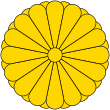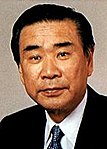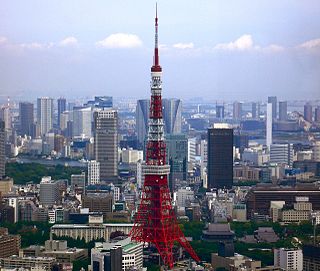
The politics of Japan are conducted in a framework of a multi-party bicameral parliamentary representative democratic constitutional monarchy whereby the Emperor is the ceremonial head of state and the Prime Minister is the head of government and the head of the Cabinet, which directs the executive branch.

Junichiro Koizumi is a Japanese politician, who was the 56th Prime Minister of Japan from 2001 to 2006. He retired from politics when his term in parliament ended in 2009, and is the sixth longest serving PM in Japanese history.

The Liberal Democratic Party of Japan, frequently abbreviated to LDP or Jimintō (自民党), is a conservative political party in Japan.

Ryutaro Hashimoto was a Japanese politician who served as the 82nd and 83rd Prime Minister of Japan from 11 January 1996 to 30 July 1998. He was the leader of one of the largest factions within the ruling LDP through most of the 1990s and remained a powerful back-room player in Japanese politics until scandal forced him to resign his leadership position in 2004. Disgraced, he chose not to stand in the general election of 2005, and effectively retired from politics. He died on 1 July 2006 at a Tokyo hospital.

The Social Democratic Party, also known as the Social Democratic Party of Japan and previously as the Japan Socialist Party, is a political party that at various times advocated the establishment of a socialist Japan until 1996. Since its reformation and name change in 1996, it has defined itself as a social-democratic party.

The New Frontier Party was a political party in Japan founded in December 1994. As a merger of several small parties, the party was ideologically diverse, with its membership ranging from moderate social democrats to liberals and conservatives. The party dissolved in December 1997, with Ichirō Ozawa's faction forming the Liberal Party and other splinters later joining the Democratic Party of Japan in April 1998.

Taku Yamasaki is a Japanese politician who served in the House of Representatives from 1972 to 2003 and from 2005 to 2009. He directed the Japan Defense Agency for two months in 1989, and served as Minister of Construction from 1991 to 1992. He was a prominent faction leader in the Liberal Democratic Party (LDP) during the late 1990s and early 2000s, and served as its Secretary-General and Vice President under Prime Minister Jun'ichirō Koizumi.
The Japan Renewal Party was a Japanese political party that existed in the early 1990s. It was founded in 1993 by 44 members of the Liberal Democratic Party led by Tsutomu Hata and Ichirō Ozawa. It was instrumental in ending the LDP's 38 year dominance of Japanese politics.
In Japan, the problem of political funding was intensely debated during the late 1980s and early 1990s, partly as a result of revelations following the Recruit scandal of 1988-89. The scandal arose as a result of the dealings of Ezoe Hiromasa, the ambitious chairman of the board of the Recruit Corporation, who sold large blocks of untraded shares in a subsidiary, Recruit Cosmos, to seventy-six individuals. When the stock was traded over the counter in 1986, its price jumped, earning individual investors as much as ¥100 million in after-sales profits. The persons involved included the most influential leaders of the LDP and a smaller number of opposition party figures. Although such insider trading was not strictly illegal, it caused public outrage at a time when the ruling party was considering a highly controversial consumption tax. Before the scandal ran its course, Takeshita Noboru was obliged to resign as prime minister in April 1989, a senior aide committed suicide in expiation for his leader's humiliation, and former Prime Minister Nakasone Yasuhiro resigned from the LDP—becoming an "independent" Diet member—to spare the much-tainted party further shame.

A general election took place in Japan on October 20, 1996. A coalition of the Liberal Democratic Party, New Party Sakigake and the Social Democratic Party, led by incumbent Prime Minister Ryutaro Hashimoto of the LDP won the most seats.
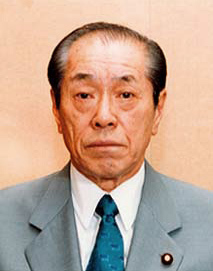
Hiromu Nonaka was a Japanese LDP politician. He served as a local politician from 1951 to 1978 and in the House of Representatives from 1983 to 2003, becoming one of its most prominent members in the 1990s. He served as Minister of Home Affairs and Head of the National Public Safety Commission from 1994 to 1995, as Chief Cabinet Secretary from 1998 to 1999, and as Head of the Okinawa Development Agency in 1999. Nonaka was widely considered as a voice of reason within the LDP.

General elections were held in Japan on 22 June 1980. They were the result of a vote of no confidence brought by the Japan Socialist Party (JSP) on 16 May regarding corruption and rises in public utility charges as reasons for the House of Representatives of Japan to withdraw its backing from the government.
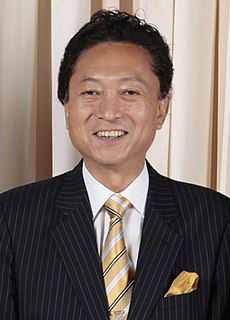
A general election for the Japanese House of Representatives was held on August 30, 2009. The opposition Democratic Party (DPJ) defeated the ruling coalition in a sweeping victory, winning 221 of the 300 electoral districts and receiving 42.4% of the proportional block votes for another 87 seats, a total of 308 seats to only 119 for the LDP.
The Hatomander was an electoral reform proposed in the 1950s by Japanese prime minister Ichirō Hatoyama and his third cabinet. His plan was to replace the SNTV multi-member constituencies for the House of Representatives entirely with First-past-the-post single-member districts. The change would have made it easier for Hatoyama's Liberal Democratic Party (LDP) to gain a two-thirds majority on its own, enabling him to pursue his plan to change the Japanese Constitution, particularly Article 9. The plan faced strong opposition led by the Japanese Socialist Party (JSP) that accused Hatoyama of wanting to "hatomander" the electoral districts to his needs. An electoral reform bill was presented to the Diet in March 1956, passed the House of Representatives in May 1956, but was not voted on in the House of Councillors in a still ongoing debate at the end of the Diet session. The LDP failed to win a majority in the House of Councillors election in July, and the plan was shelved.
Niigata 5th district is a single-member electoral district for the House of Representatives, the lower house of the National Diet of Japan. It is located in the central, Chūetsu region of Niigata and covers parts of Nagaoka City, the cities of Ojiya, Uonuma, Minami-Uonuma as well as the former Minami-Uonuma County that, as of 2012, only has one remaining municipality: Yuzawa Town. As of September 2012, 282,904 voters were registered in Niigata 5th district, giving its voters above average vote weight.

The Murayama Cabinet governed Japan under the leadership of Prime Minister Tomiichi Murayama from 1994 until a 1995 Cabinet Reshuffle. Murayama was elected prime minister by the National Diet on 29 June 1994 after the threat of a no-confidence vote had brought down the previous minority Hata Cabinet. Murayama's and his cabinet's formal investiture by the Emperor took place one day later.
Hiroshi Mitsuzuka was a veteran Japanese politician. He was a member of the Liberal Democratic Party of Japan. He represented his party at the House of Representatives from 1972 to 2003. In addition, he served as transport minister, international trade minister, finance minister and foreign affairs minister.
The Hosokawa Cabinet governed Japan from August 9, 1993, to April 28, 1994, under the leadership of Prime Minister Morihiro Hosokawa.
The 1994 electoral reform in Japan was a change from the previous single non-transferable vote (SNTV) system of multi-member districts (MMD) to a mixed electoral system of single-member districts (SMD) with plurality voting and a party list system with proportional representation. The reform had three main objectives: change the one-party dominance of the Liberal Democratic Party (LDP) from the previous 1955 system to a two-party system with alternation in power, reduce the cost of elections and campaigns, and change campaign focus from individual-centered to party-centered.
